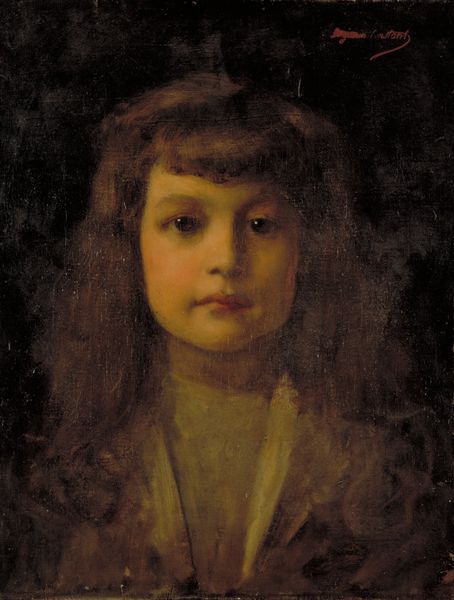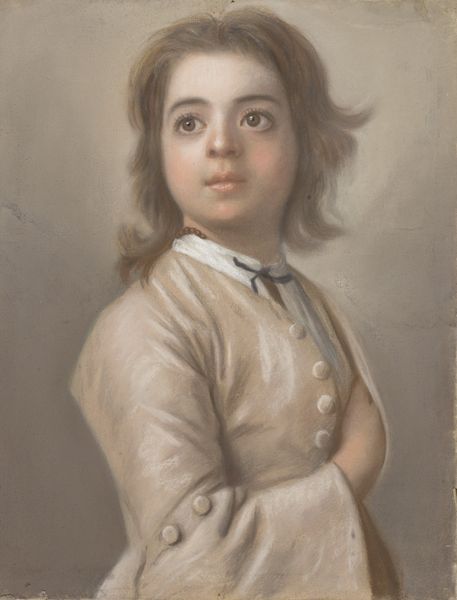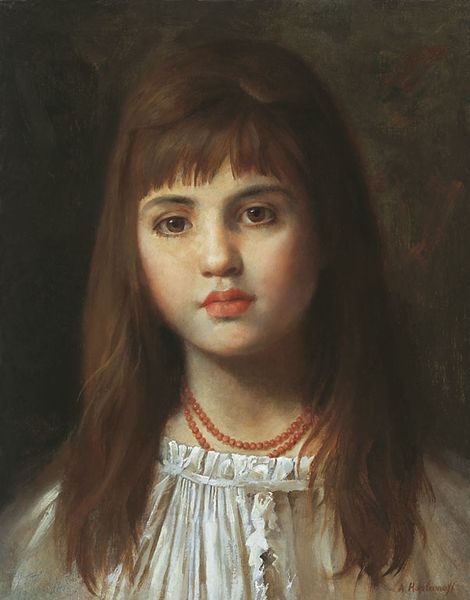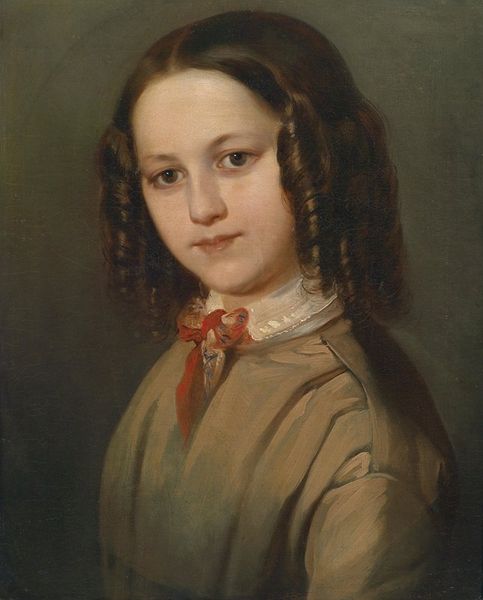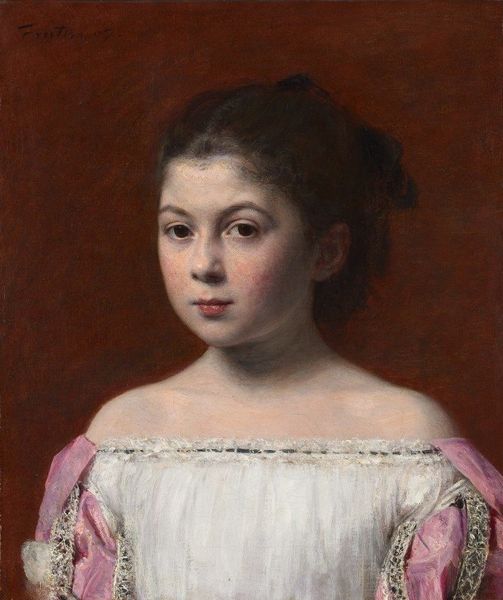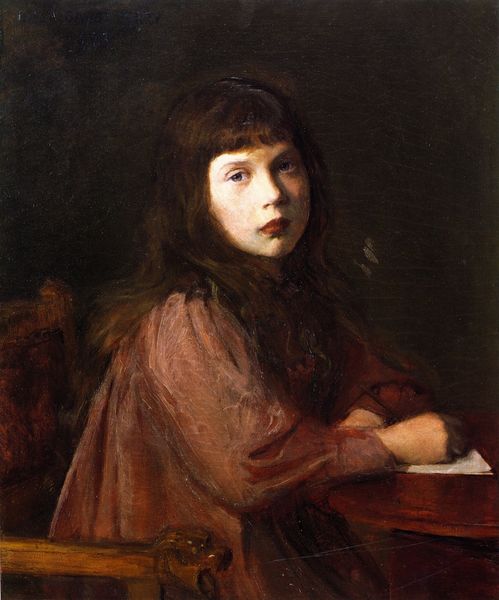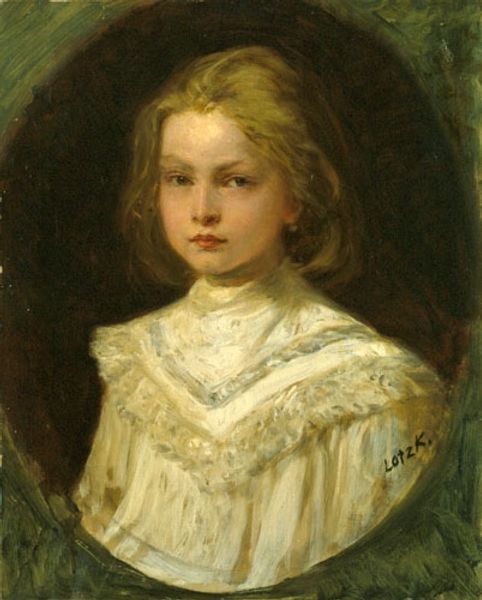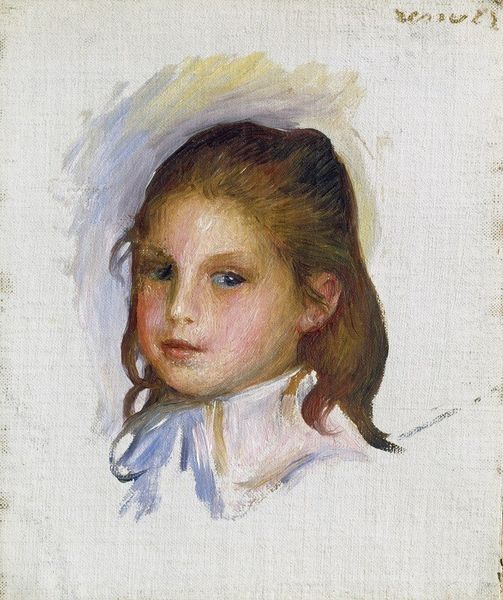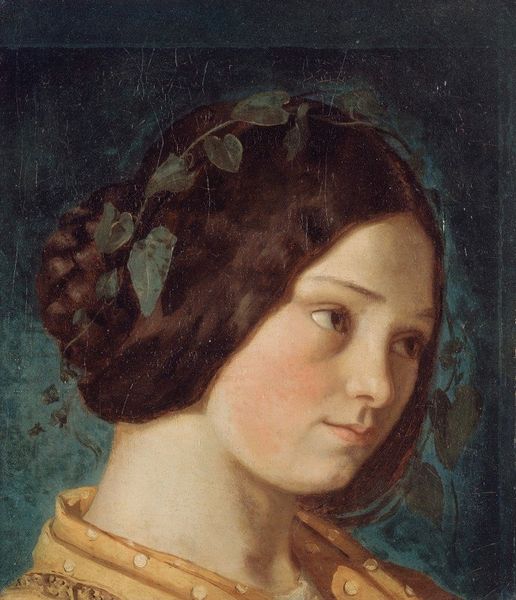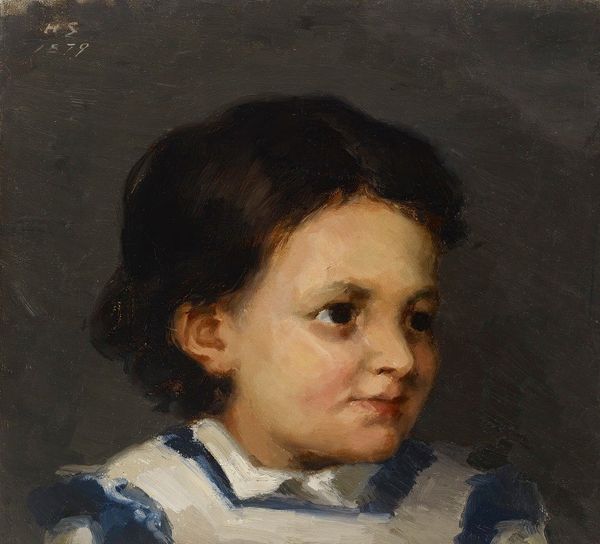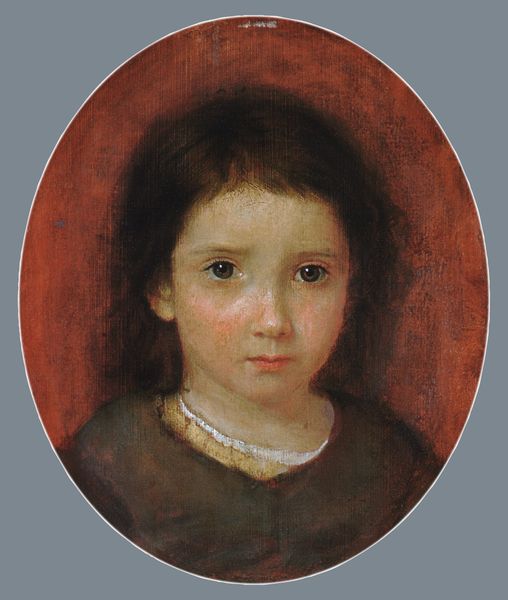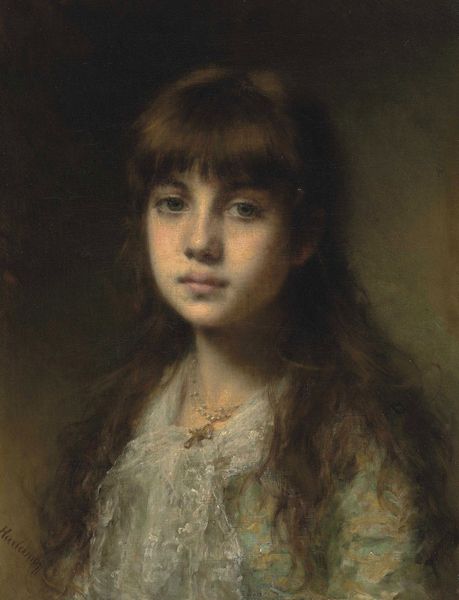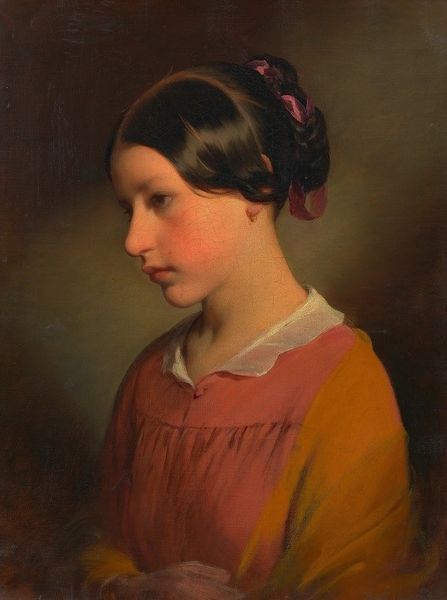
Portrait of a Little Girl 1640
0:00
0:00
diegovelazquez
Hispanic Society of America, New York City, NY, US
painting, oil-paint
#
portrait
#
baroque
#
painting
#
oil-paint
#
11_renaissance
#
genre-painting
#
realism
Copyright: Public domain
Art Historian: Welcome. Here we have Diego Velázquez’s "Portrait of a Little Girl," painted around 1640. It's oil on canvas, and presently resides at the Hispanic Society of America. Curator: The somberness hits you first, doesn't it? The limited palette almost drains the color. And the textures are so rich—look at the paint handling in the girl's hair; it’s incredibly skillful, but there's also a looseness to it. Art Historian: It’s interesting you pick up on the material handling so immediately. The simplicity, almost austerity, aligns with Spain’s political and economic climate during the 17th century. The monarchy was struggling, patronage was shifting. Curator: Austerity or canny choices? Think about it. The limited pigment range, primarily dark browns, blacks, and whites, would’ve been cheaper. It's not just aesthetic; it speaks to material constraints or purposeful economies in Velázquez's studio practice. Art Historian: Perhaps both. The dark palette became fashionable, but you’re right to point out the costs of production. Also, portraits of children were emerging as a distinct genre reflecting evolving social values, so cost could be a factor that affects the format and presentation of a work of this genre. It certainly adds layers to its cultural significance. This wasn’t just any child. Curator: Of course! Even her simple dress, the cool blues and grays of it, show expert technique but not overt lavishness. The clothing shows this painting was produced with attention, resources, planning and execution; somebody put care into the construction of that garment that would later inspire Velazquez Art Historian: Exactly. Velázquez painted at the service of powerful individuals and entities; this young girl most likely was from a prominent family, subtly asserting their status in this subdued, yet dignified manner. The portrait exists as more than a representation of this little girl, it's representative of familial wealth. Curator: Agreed, you’ve really helped to highlight how what might seem a straightforward portrait is actually communicating multiple complex signals of status through both materiality and social mores. Art Historian: And you've helped to remind us to read visual expression of an era beyond its more explicit subject. Curator: Always! Thanks.
Comments
No comments
Be the first to comment and join the conversation on the ultimate creative platform.
